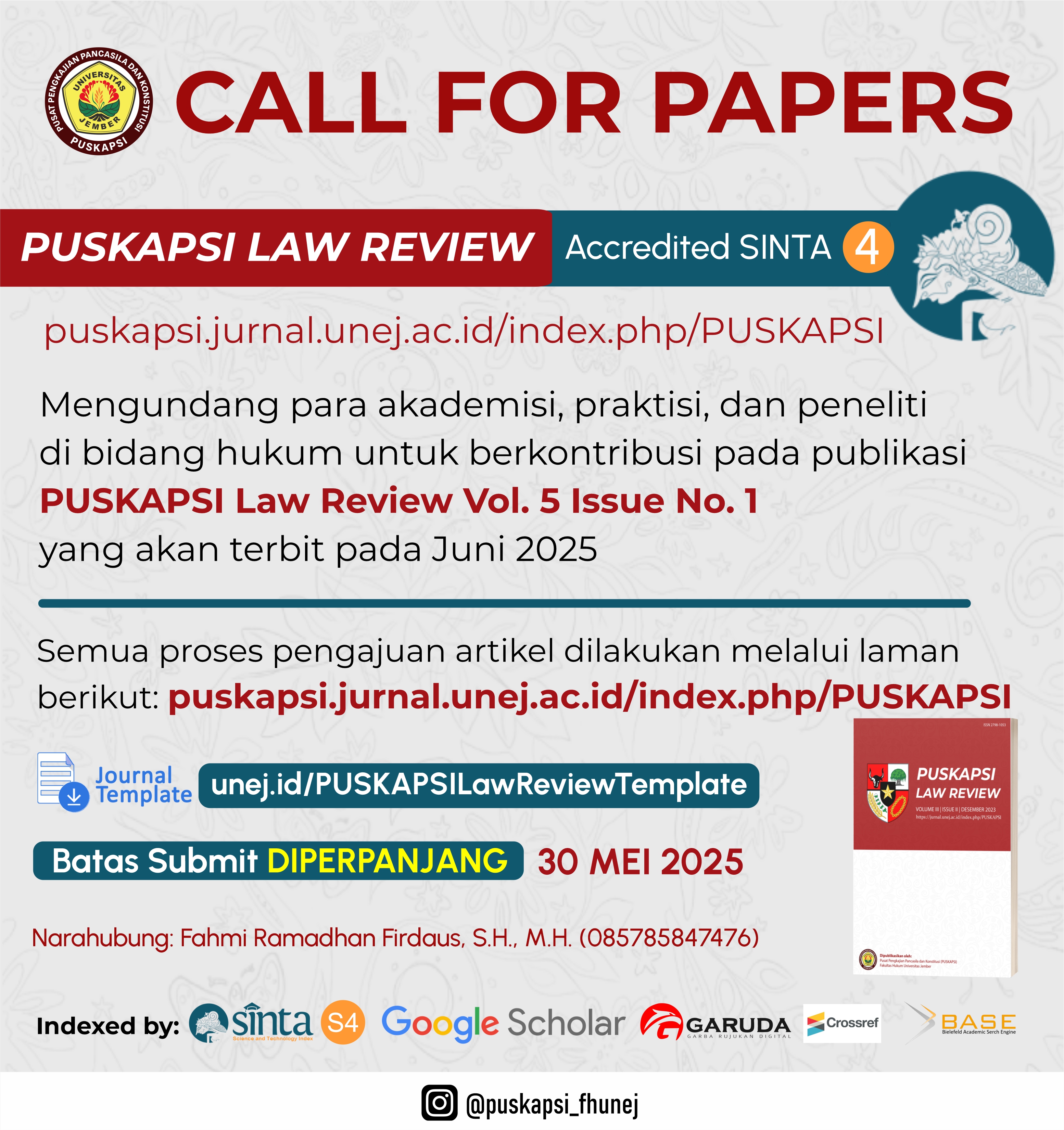
Policy of Screening for Plagiarism
PUSKAPSI Law Review mematuhi praktik internasional dalam mencegah plagiarisme. Sejak edisi pertama, jurnal PUSKAPSI menggunakan sistem pemeriksaan silang untuk plagiarisme melalui platform seperti Turnitin. Oleh karena itu, semua penulis yang mengirimkan manuskrip ke jurnal PUSKAPSI harus memastikan bahwa karya akademik mereka menghormati hak cipta penulis lain dan menghindari segala bentuk plagiarisme.
Setelah manuskrip dikirimkan ke jurnal PUSKAPSI, tim editorial akan menugaskan kelompok anggota anti-plagiarisme untuk memeriksa manuskrip menggunakan berbagai alat. Hasil pemeriksaan manuskrip harus menunjukkan tingkat kesamaan maksimal sebesar 30%. Dewan Editorial juga memiliki hak untuk menolak pengajuan jika ditemukan indikasi plagiarisme.
Berikut adalah beberapa indikator plagiarisme yang harus diketahui oleh semua penulis:
-
Plagiarisme konten berulang
Bentuk plagiarisme yang paling mudah diidentifikasi adalah menyalin karya penulis lain dengan mengutip kata-kata, kalimat, atau paragraf tanpa mencantumkan sumber asli. Model plagiarisme ini dapat dengan mudah terdeteksi oleh perangkat lunak pemeriksa plagiarisme. -
Reproduksi bagian substansial
Plagiarisme ini terjadi ketika seorang penulis mereproduksi sebagian besar karya penulis lain tanpa mencantumkan nama penulis tersebut. Istilah "reproduksi substansial" di sini dapat dipahami sebagai menyalin ide orang lain baik dari segi kuantitas maupun kualitas yang berpotensi menghilangkan hak penulis asli dalam konteks kekayaan intelektual. -
Parafrase tanpa mencantumkan sumber
Jenis plagiarisme ini terjadi ketika seorang penulis mengambil ide, kata-kata, atau frasa dalam bentuk parafrase dari kalimat atau paragraf tanpa mencantumkan sumber asli. Jenis plagiarisme ini sering kali tidak dapat terdeteksi melalui perangkat lunak plagiarisme karena berbasis pada ide. Namun, praktik ini tetap dianggap tidak etis jika penulis tidak mencantumkan atau mengakui sumber asli dari penulis awal.

 Download Disini
Download Disini




.svg_.png)




